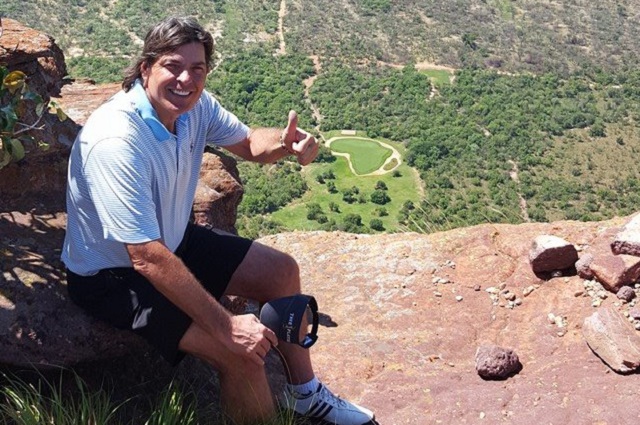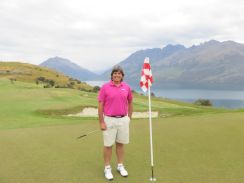We are all looking for that one magical tip that takes our golf game to the next level. The same holds true for the 146 professional and 10 amateurs in the field at the 113th U.S. Open at Merion Golf Club.
Remember Lee Westwood thinking it would be putting a 61-degree lob wedge in his bag courtesy of a tip by fellow countryman and Ryder Cup champion Ian Poulter? Dr. Bob Rotella likes to get inside the golfer's mind and give tips like "play to play great, don't play not to play poorly."
Did you see Michael Breed's arm throw tip for playing the shortest short hole at Merion, the 155-yard par-3 13th? There are a million tips out there but what tip would it take to get Lee Westwood, Steve Stricker and Luke Donald that coveted major championship they so desire?
Maybe that tip will come from a couple Philadelphia area PGA pros Lou Guzzi and Dom DiJulia who are intimately familiar with the challenges Merion poses and Golf Magazine Top 100 Teachers. Featured in Golf Magazine's recently published Big Book of Basics along with five other elite instructors, their chapters can help competitors tackle the difficult U.S. Open course.
It all starts on the tee. Guzzi—a two-time PGA Teacher of the Year in the Philadelphia Section who teaches out of Talamore Country Club in Ambler, PA—stresses the need for pros to have a pre-shot routine that is as unwavering as Merion’s demands.
“To hit more fairways and really keep the nerves in check, it is very important that you keep your pre-shot routine consistent,” Guzzi said, citing Chapter 1. “They’ll need to work on feeling the club they are about to hit, working on their breathing and relaxing to establish that consistent routine.”
It is imperative that players keep the visual of the hole they are playing out of their minds because “there are too many intimidating holes out there and those intimidating visuals can really lock them up from swinging the club smoothly and freely.”
“Preparation and a consistent pre-shot routine is key. They have to know the shape of their shot, trust their aim, and that gives them the best opportunity to find the fairways at Merion.”
From there, it all ends up on the green, where DiJulia said the process is key to mastering the greens of Merion. A PGA Master Professional from Jericho National GC in New Hope, PA, DiJulia said putting successfully on U.S. Open greens goes far beyond technique and encompasses the process that all good putters employ.
“I guarantee the U.S. Open winner will have his own very clearly definable ‘Process’ that addresses each of the challenges we discuss in Chapter 5,” DiJulia said. “To keep it quick and simple, a great putter will—at a minimum—see the slope, see the curve, sense or feel the speed, get set and go.”
DiJulia said, along with a clearly defined process, there is one element found in all successful putters.
“To win a major, controlling the speed of putts is an absolute must,” he said. “So this year’s victor will have a putting stroke that includes the fundamentals most important to controlling speed. There are two and both involve consistency.”
The first is tempo. Back in the 1990s, DiJulia taped a few U.S. Opens. He ran back the tapes hundreds of times with a stopwatch and timed every putt several times, seeking the "right” tempo. What he discovered is there was no “right” tempo; the best putters rather had a consistent tempo while the worst putters had an inconsistent one.
The second is acceleration. According to DiJulia, all great putters have both effective and consistent acceleration. The eventual winner at Merion will produce a rhythmic, consistent speed on both e ends of the putt.
“Consider getting onto a highway with your car,” he said. “Effective putters don’t squeal their tires by giving their stroke too much gas all at once and they don’t risk their back bumper by getting on the highway so slowly that they will get hit from behind. Putting at Merion—or anywhere—requires you find an acceleration style that works for you on all putts and stick to it.”
In other words, it’s a process and whether you are one of the 156 golfers teeing it up at Merion this week or a mere amateur like me, Golf Magazine's Big Book of Basics can help. I will be watching and listening to hear if the names Lou Guzzi and Dom DiJulia pop up on the NBC, ESPN or Golf Channel broadcasts the next four days.
About the Book:
GOLF MAGAZINE: BIG BOOK OF BASICS
By GOLF Magazine’s Top 100 Teachers
Edited and Introduction by David DeNunzio, Managing Editor–Instruction, Golf Magazine
Time Home Entertainment Inc.
Publication date: October 23, 2012
$32.95 hardcover
Source of Rozella quote:
http://www.golfdigest.com/golf-instruction/mental-game/Rotella
Guzzi and DiJulia quotes provided by BZA Public Relations release on 6/7/13.








